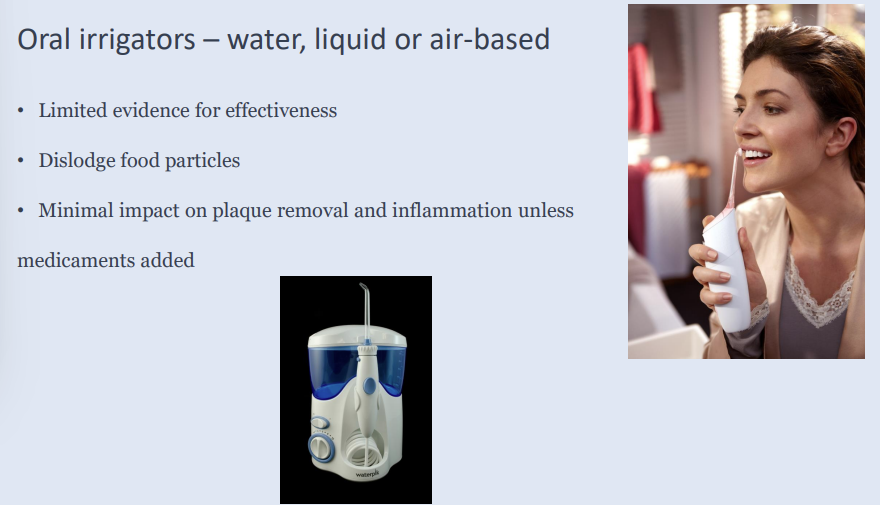interdental cleaning
1/10
There's no tags or description
Looks like no tags are added yet.
Name | Mastery | Learn | Test | Matching | Spaced |
|---|
No study sessions yet.
11 Terms
what are the main ways of interdental cleaning?
Interdental brushes - nylon
Interdental silicone sticks
Floss
Fossettes
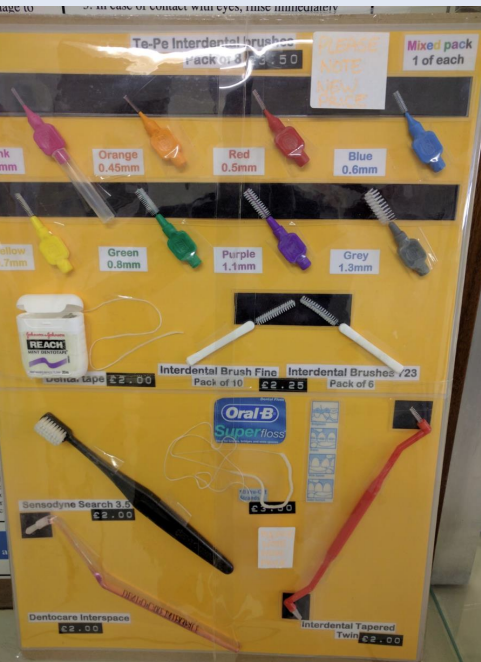
is flossing/interdental cleaning really necessary?
yes! - though there was some contrasting literature
Evidence supports the use of interdental brushes for cleaning between the teeth where there is space to do so – particularly in areas of periodontal tissue loss caused by periodontitis
Therefore, floss is not a waste of time – it is a viable alternative to interdental brushing where appropriate → eg tight contacts
difficult to investigate - needs very long term studies → perio is a chronic long term disease
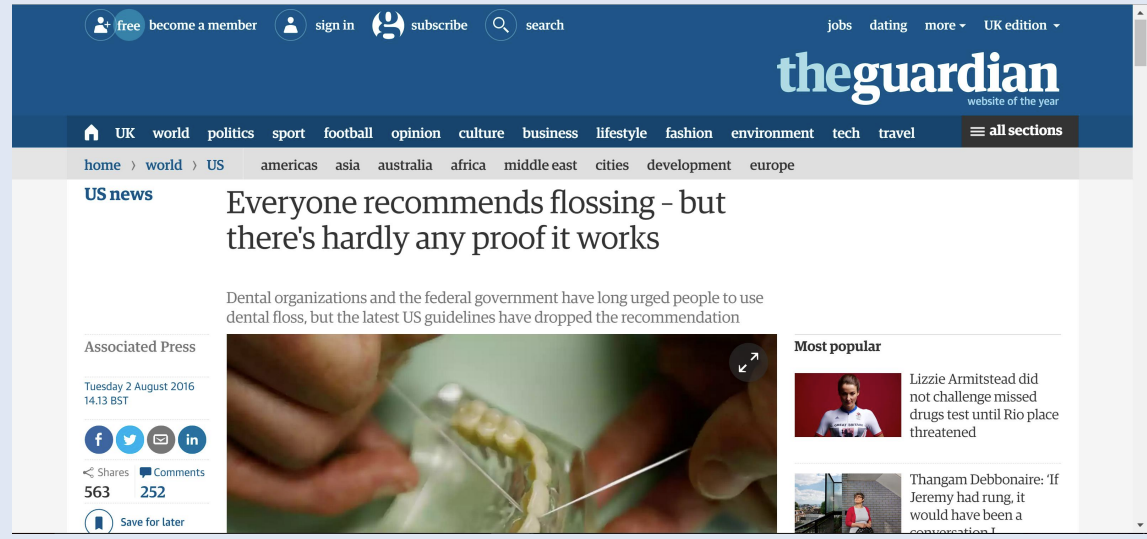
recommendation
Scientific meeting in 2015 evaluating evidence to produce guidelines for the prevention of periodontal diseases
Recommendation “Daily cleaning between your teeth using special interdental brushes is essential for treating and preventing gum disease. Floss is of little value UNLESS the spaces between your teeth are too tight for the interdental brushes to fit without hurting or causing harm”

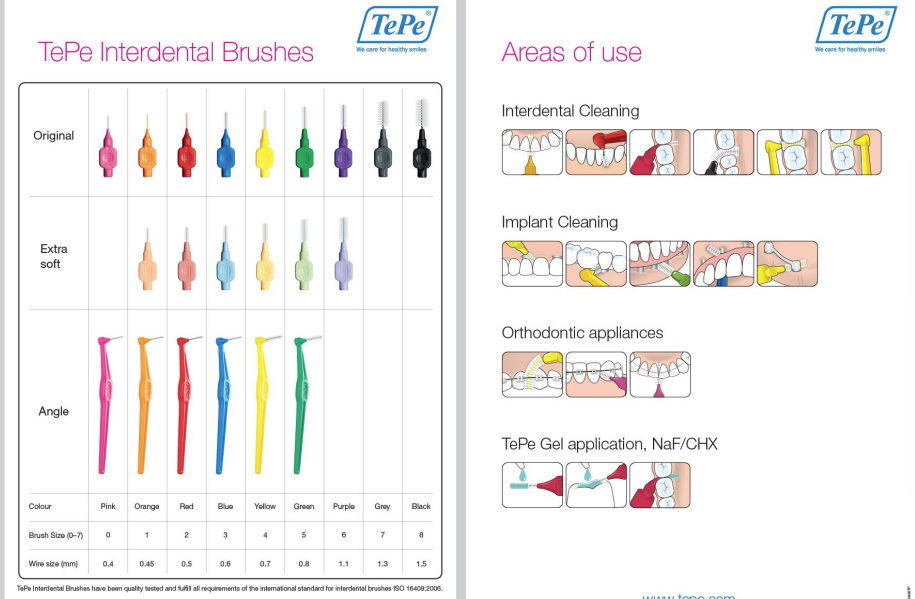
Interdental brushes
First choice for interdental cleaning where appropriate
Remove plaque supra and subgingival surfaces approximately 2-2.5 mm below gum margin
Can be cylindrical or tapered
Better engagement of interproximal spaces after disease or recession
Good for engaging root concavities → exposed roots due to recession
Easy to use
good for orthodontic appliances
chlorohexidine gel can be added onto the brushes to reduce inflammation → short term basis
don’t put toothpaste on the interdental brushes as the toothpaste contains abrasive agents → they may access subgingival areas - cementum/root dentine → wearing as they are less mineralised
should be done BEFORE brushing → fluoride have access to these areas
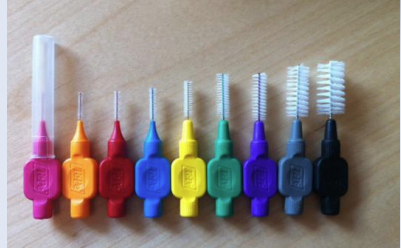
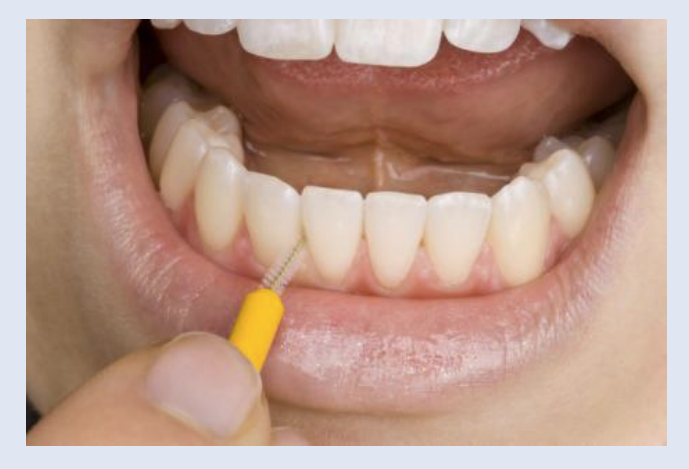
interdental brushes are inserted just above the papilla - back and fourth
how often do you change the brushes - depends on how often the brushes are used and how many teeth they are used on → most patients need a variety of brushes
general rule - lasts a week
use of these brushes should be reviewed regularly → spaces between the teeth will become larger due to reducing inflammation as treatment progresses → needs to move a size up
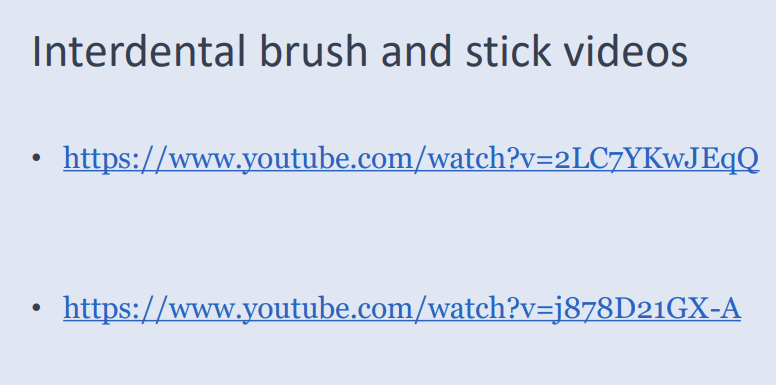
Silicone (rubber) sticks
diameter is narrow - best to replace the smaller TePe brushes
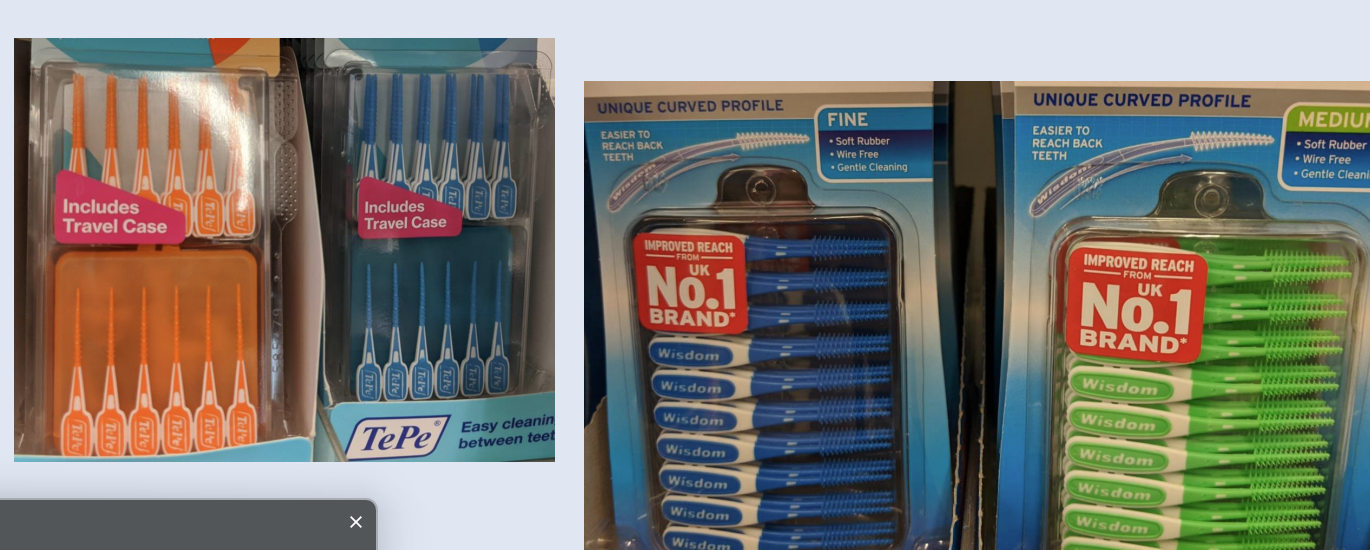
Flossing
Advise where spaces too tight for interdental brushes
Difficult → long term compliance is poorer compared to interdental brushing
Requires skill and manual dexterity
Time consuming compared to interdental brushes
Waxed/unwaxed → waxed is smoother and can pass through the contact point more easily
Flossettes (holders)/floss holders
Superfloss for bridgework
flossing techniques
20-30 cm
small length is passed through
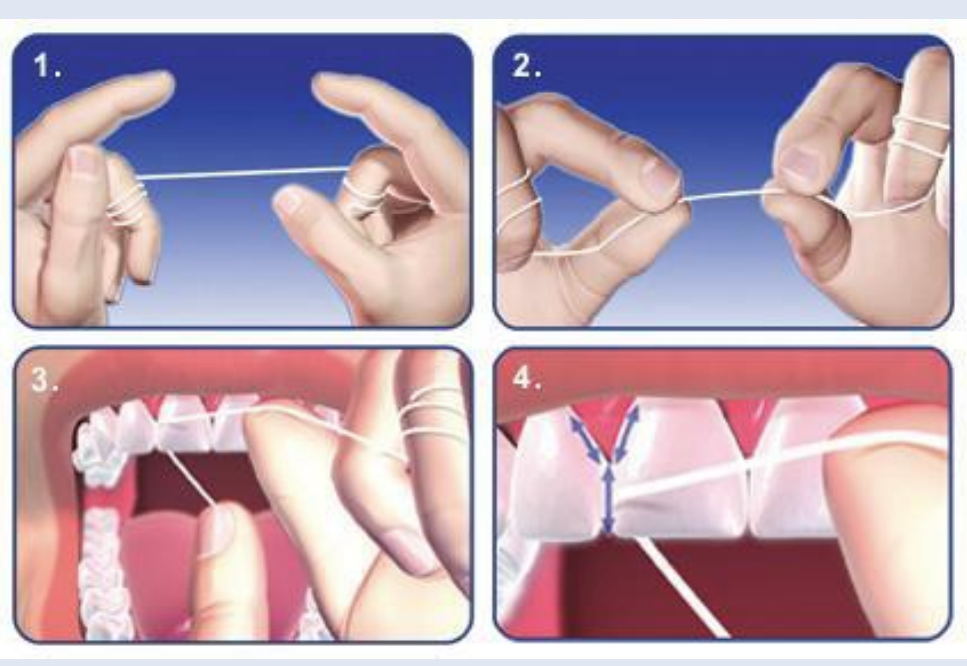
Other floss types
Flossettes
SuperFloss
tape - wider version of floss
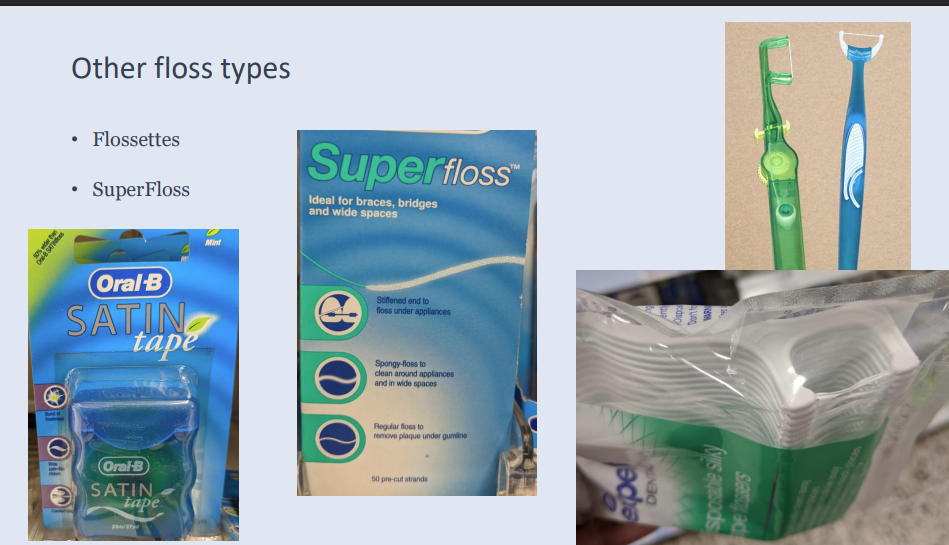
Single-tufted brushes
Crowding, rotated or tipped teeth
Localised gingival recession
Lone standing teeth
Partially erupted wisdom teeth
operculum - skin flap over tooth → plaque trap underneath
Implants, furcation areas, fixed orthodontic retainers
Place bristles into gingival margin area.
Apply medium pressure while moving brush in small circular motions
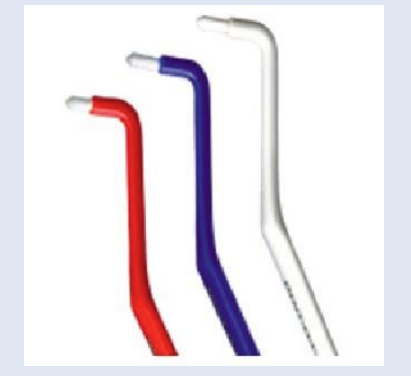
Oral irrigators – water, liquid or air-based
Limited evidence for effectiveness
Dislodge food particles
Minimal impact on plaque removal and inflammation unless medicaments (chlorohexidine) added
